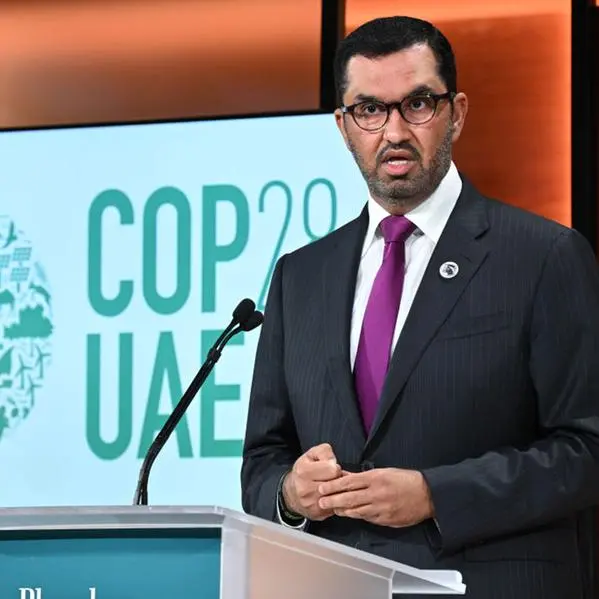PHOTO
GMR interviews Bengt Eriksson, Managing Director of WPP-owned global brand and design consultancy, Landor Dubai, on how technology is changing brand storytelling in the Middle East
When it comes to brand consulting and design, what’s the best way to put them into practice? Why is a brand much more than a logo?
A brand is so much more than just a logo – it’s an experience or a feeling. The world’s most successful brands are those that are loved and respected, occupying a coveted place in consumers’ hearts and minds.
Achieving this is no small feat, and for brand consultants it means identifying the sacred elements of a brand and figuring out how best to deploy them. This can be anything from a colour, to a smell or sound – consider how the scent of warm cookies is recognised as a signifier of arrival at a DoubleTree hotel.
Of course, brands must also be agile enough to speak to a particular audience or market. In this scenario, other brand expressions can be layered on top of the “sacred” to allow the brand to flex to different environments, and offer a positive experience that speaks to many different types of people.
Brands also need to remain agile over time, evolving in line with customer needs. However, many make the mistake of setting sail on a journey of transformation, without knowing their final destination.
Charting a clear course requires a deep understanding of market trends, how a brand’s self-perception correlates with the public’s view of them, and where it should move in order to realise new commercial opportunities. Only then can a brand remain relevant and constant in the midst of change.
How does it translate into being a commercially successful exercise?
Commercially, brands have never been more important – many companies now recognise their brand as an asset on the balance sheet. As a result, understanding the brand, the competitive context they are operating in and the opportunities on the horizon is essential. Notably, the pace at which individual sectors operate can vary dramatically.
In fashion, for example, the timescales you’re working to might be a matter of months or even days, whilst in the automotive sector, car manufacturers may already be planning for the launch of models in 2032.
A brand consultant must consider all these factors, and then devise an actionable strategy for elevating that particular brand above its competitors.
Any strategic exercise should also ask difficult questions of the brand; why does it exist, what are its core beliefs, and what will it be prepared to fight for? A strategy that provides answers to these hard questions is going to be much more resilient and therefore more commercially successful in the long-term.
What are the biggest risks and the greatest challenges of a brand identity?
An important factor that needs consideration is how your brand is perceived through digital channels, including mobile.
Today, much of the brand experience is actually delivered on a mobile phone or online, and a brand consultant must have a multi-channel strategy for engaging with consumers.
This strategy should include which elements of digital, such as social media, can be leveraged and which should not. These decisions should take into account how the various brand expressions live in a digital environment, and how the overall brand experience is improved as a result.
A related part of this journey is cultural activation and engagement – how brands engage with customers (existing and potential), their own staff, and even suppliers, through these different channels.
Again, crucial questions must be asked about how the brand experience is managed and improved at every touchpoint, whether physical or digital.
So what is it that creates a lasting impression on peoples’ minds? Why is it that people remember this brand forever and forget others?
Any brand has the ability to live forever in people’s mind if they reinvent themselves as the world changes, and follow the right branding strategy and product mix.
Building a brand is like building a cathedral – something big and impressive sitting on a hill that people can aspire to belong to. Such buildings take time to construct, and it is exactly this care that has allowed them to stand the test of time. A brand building process should be exactly the same.
In today’s fast-paced world where everything happens at speed, this care and attention can fall by the wayside as brands fend off disruption from new and unexpected places. Even the smallest brands are now competing on a global stage, and so this careful brand building should always remain front of mind in order to achieve longevity. Failure to do so could leave brands at risk of losing relevance very quickly.
Equally, people remember a brand because it means something to them – it creates a powerful experience that resonates with them and their needs.
For brands, this is becoming increasingly important as consumers are afforded more and more options. Why should a consumer go with your brand over another? Brands must answer this question by infusing a sense of purpose into everything they do.
In this new era of transparency and accountability, consumers expect brands to align with how they see the world, make them feel proud of that association and create a strong emotional affinity between the two.
Brands are built through experiences, and brands, which successfully create experiences that matter to their consumers will find that they remain not only in their minds but in their hearts as well.
When it comes to building small and big brands, are there different perspectives on how to build them? Does the branding exercise begin from this premise?
I think the fundamental principles remain the same, albeit with slightly different tools at your disposal.
Big brands are often tempted to bombard the world with their brand – the bigger the better – whilst smaller brands feel that, without the budget, they can’t compete.
For both, a clearly articulated brand strategy should help inform where and when they invest their marketing budget. If you want to have customers all around the world, it stands to reason that your strategy will be very different from a brand which is operating in a distinct and geographically small market.
Nonetheless, big and small brands should be prepared to answer the same questions regardless of their size – where should I pick my battles, where will get me the most leverage, and so on.
How do you see the role of technology impacting brand storytelling?
Today, an increasing number of brand touchpoints are digital, and as a result, a large chunk of brand marketing campaigns happen on screens – very often mobile. A rapidly shifting technological landscape has given rise to a number of new technologies, from artificial intelligence to virtual and augmented reality. These channels represent a new battleground for brands and offer opportunities to delight and surprise the customer throughout their journey.
As with any touch point, however, these emerging tech-enabled brand interactions must build brand love. Brands must develop such interactions with end users’ needs in mind, or they run the risk of being perceived as cost-saving measures or gimmicks. For the brands that keep their consumers front of mind, artificial intelligence or extended reality present extraordinary opportunities to enhance the brand experience.
So when it comes to customer engagement, which way is more everlasting — the traditional or digital ways of branding? Does being on digital create more challenges for brands in terms of creating an everlasting impression on people’s minds?
Again, this depends on the overarching goals of the brand in question – neither is objectively better than the other, and usually a combination of both traditional and digital channels is most effective. It’s certainly true that as more and more people are using digital touchpoints such as their phones to interact with brands, brands can ill-afford to ignore this trend.
In the near future, I think we’ll see a sweet spot emerge where the virtual world blends elements of a traditional brand experience with the new possibilities such tech offers.
By Sunil Kumar Singh
The post Why a brand is so much more than a logo appeared first on GMR-GulfMarketingReview.
Copyright © MediaQuest Corp. All rights reserved. Provided by SyndiGate Media Inc. (Syndigate.info).











